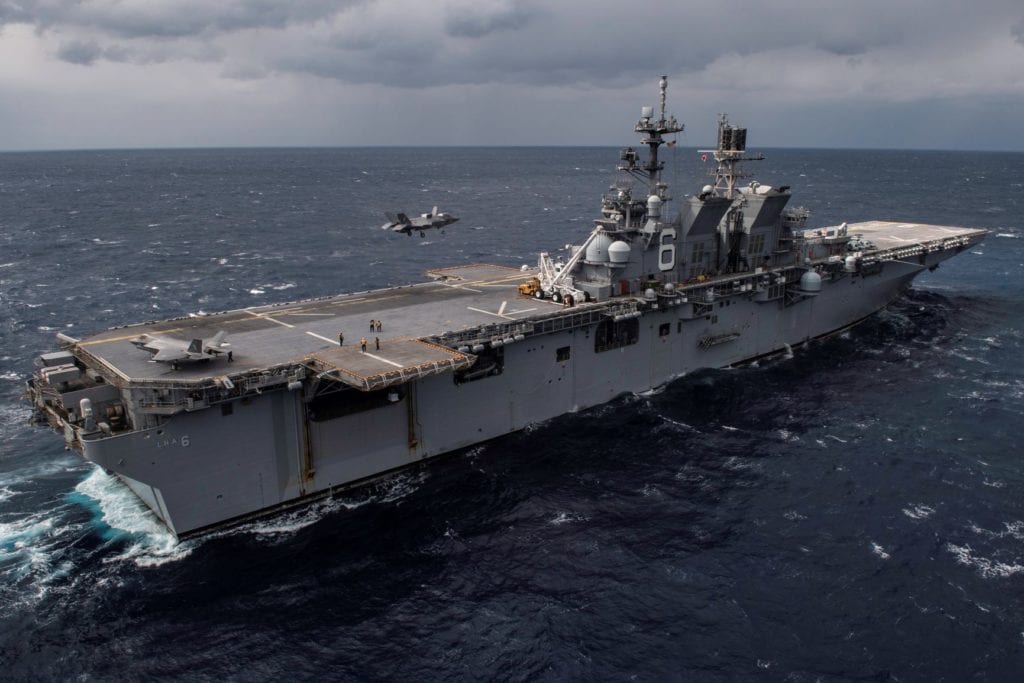
ARLINGTON, Va. — Sustaining the troubled Lockheed Martin F-35 Lightning II strike fighter over its expected 66-year service life will cost more than the total purchase price of thousands of the aircraft, the Pentagon’s most expensive weapons platform, a government watchdog told lawmakers.
The Defense Department plans to acquire nearly 2,500 F-35 aircraft for about $400 billion over the next five decades for the Air Force, Navy and Marine Corps. However, the latest Government Accountability Office (GAO) report on the nation’s biggest weapons program indicates the services will incur an additional $1.3 trillion in sustainment costs for maintenance, repairs and technology upgrades over that same period.
That raises the issue of the services’ affordability targets, “how much the Air Force, the Navy and Marine Corps can afford to spend to sustain the F-35,” GAO’s Diana Maurer, director of military structure and operational issues, told a joint hearing by two subcommittees of the House Armed Services Committee (HASC) April 22. Originally estimated at $1.11 trillion in 2012, sustainment costs for the Fifth Generation fighter have grown to $1.27 trillion, despite efforts to reduce costs.
“The bottom line here is the services have a plane that they can’t afford to fly the way they want to fly it, at least in the long term,” Maurer told the HASC Tactical Air and Land Forces and the Readiness subcomittees.
The services face a substantial and growing gap between estimated sustainment costs and affordability constraints — costs per tail, per year that the services project they can afford. The preliminary GAO report to Congress said the gap would total about $6 billion in steady state year 2036 alone. The services will collectively be confronted with tens of billions of dollars in sustainment costs that they project as unaffordable during the program.

The Air Force, which is buying the most aircraft, 1,763 F-35As — the conventional takeoff and landing variant — needs to reduce estimated annual per-plane costs by $3.7 million (or 47%) by 2036, or costs in that year alone will be $4.4 billion more than the Air Force can afford, the GAO said. The Navy and Marine Corps, which are buying hundreds fewer aircraft, face smaller, but significant affordability gaps. For the Navy, which plans to buy 273 F-35Cs, the aircraft carrier variant, the gap would total $655 million, and for the Marine Corps buy of 353 F-35Bs, the short takeoff and vertical landing variant, and 67 of their own F-35Cs, the total cost overrun in 2036 would be $886 million.
GAO’s draft report suggested Congress consider requiring annual Pentagon reports on progress in achieving the affordability constraints. It also suggested making F-35 procurement decisions contingent on Defense Department in achieving these constraints.
Subcommittee members’ reaction to the report ranged from outrage to dismay. If the F-35 program can’t control and reduce sustainment costs, “we may need to invest in other, more affordable programs,” said New Jersey Democrat Rep. Donald Norcross, chairman of the readiness subcommittee.
- Shall We Play a Game? Winning Isn’t the Point, Experts Say - April 5, 2023
- U.S. Goal: Maintaining Extended Presence in Arctic’s Harsh Environment - April 4, 2023
- Joint, Combined Exercise Shows Marine Littoral Regiment Idea is on ”Right Track’ - February 24, 2023






